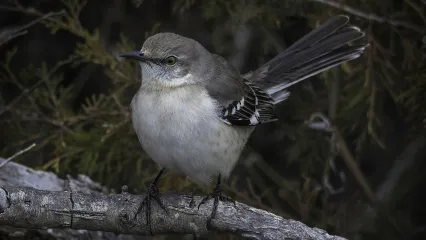
Description
This small, slender sparrow is most easily identified by its pink bill and pink legs. The face, chest and belly are a uniform soft, grayish brown with no streaks or spots. A faint, white ring circles each eye. The back, wings and tail are a medium brown. More colorful individuals may have a rusty tint to the crown, cheeks and back feathering. Each wing has two thin, white stripes, or wing bars, but these bars are easy to overlook. This bird closely resembles the juvenile white-crowned sparrow, which is larger, lacks the white eye ring and usually has three tan stripes extending from the bill to the back of the head.
Size
Approximately 4.7 to 5.9 inches long. Wingspan of 7.9 inches.
Habitat
Field sparrows are common in open woodlands, savannahs, brushy prairies, and fencerows. They are rare in urban and residential areas. These birds may be found nearly statewide except for the western half of the Panhandle. This is a year-round resident in Oklahoma.
Life Cycle
At bird feeders field sparrows eat millet. Away from feeders, they eat small seeds from the ground or pulled off plant stalks like ragweed or native sunflowers.
How To Observe
Field sparrows typically travel and feed in small flocks of five to 15 birds. They prefer to feed from ground level and platform-type feeders placed 6 to 18 inches off of the ground. In winter, they often travel with other seed-eating songbirds such as dark-eyed juncos, Harris’s sparrows and white-crowned sparrows.


